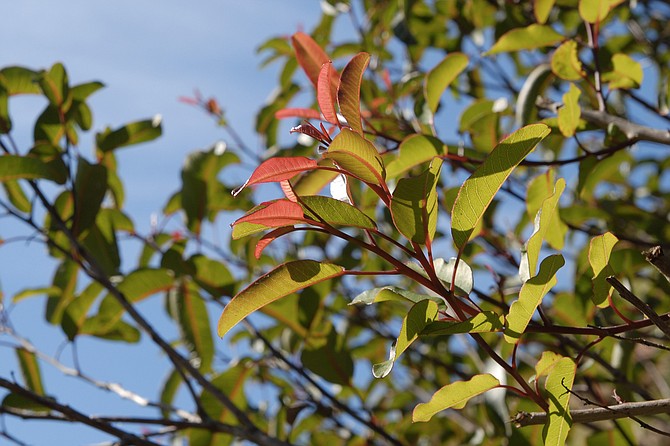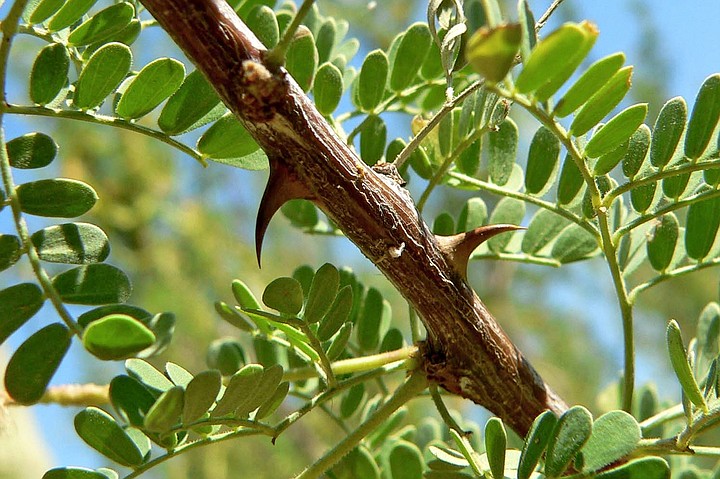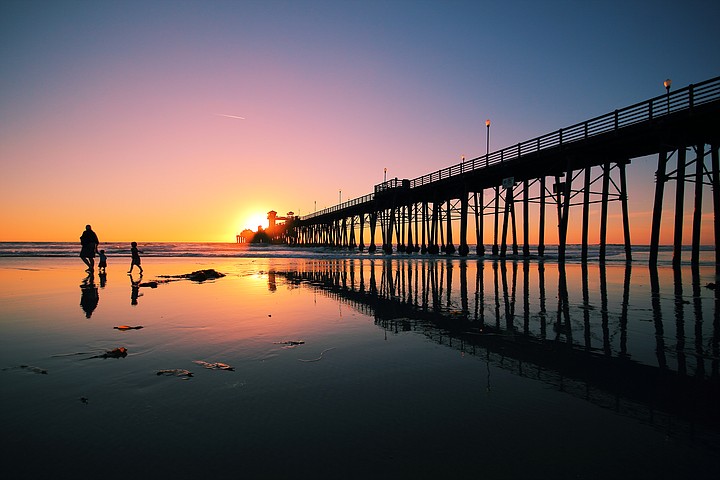 Facebook
Facebook
 X
X
 Instagram
Instagram
 TikTok
TikTok
 Youtube
Youtube

The Frost-Nipped Legacies of last November’s and December’s cold spells aren’t hard to spot. Brown lawns, half-dead-looking avocado trees, and wilted ornamental plants like poinsettias in certain areas of San Diego County tell the story plainly enough. But a common frost-sensitive native plant -- the laurel sumac -- is even more widely expressive. Laurel sumac is one of the largest and most conspicuous plant within the coastal-sage-scrub vegetation community growing on many of San Diego’s coastal hillsides. They tend to become noticeably frost-bitten in low lying areas, where chilled air sinks and settles in during the night and early morning hours.

Acacias, festooned with myriads of fluffy yellow blossoms, are brightening street-sides, freeway embankments, and backyard gardens throughout the San Diego area this month. Although many acacias are native to subtropical regions, nearly all we see today in San Diego were introduced from Australia. The Anza-Borrego Desert’s native acacia (Acacia greggii) is the notoriously thorny “cat-claw,” known by early desert pioneers as “tear-blanket” and “wait-a-minute bush.”

Extremely High and Extremely Low Tides are set to occur on January 20-22. On Friday, January 20, a peak high tide of +7.42 feet occurs at 7:33 am. Saturday’s high tide of +7.68 feet crests at 8:21 am. Sunday’s high tide of +7.64 feet peaks at 9:08 am. If any strong winter storm happens to arrive from the west during these peak tides, some flooding of low-lying coastal areas around San Diego is likely. Several exceptionally low tides will also occur within the same string of January dates. On Friday, January 20, the tide falls to -2.03 feet at 2:51 pm. On Saturday, the tide drops to -2.2 feet at 3.33 pm. On Sunday, a low tide level of -2.07 feet occurs at 4:15 pm. Any of these low-tide occasions are perfect for exploring marine life in the tidepool areas along San Diego County’s coastline.
Observers will enjoy watching Venus and Saturn draw closer every night. On the 21st, Venus is only a degree below Saturn. Then on the 22nd, the two planets meet—less than a quarter degree apart. Look low in the southwest at around 4:45 PM. Though just 10° high, which necessitates an ocean-flat horizon (don’t bother if hills, trees, or houses block the horizon in this direction), the extreme super-brilliance of Venus makes that Evening Star a don’t-miss target, especially with that little “star” (the planet Saturn) hovering next to it in the fading dusk.


The Frost-Nipped Legacies of last November’s and December’s cold spells aren’t hard to spot. Brown lawns, half-dead-looking avocado trees, and wilted ornamental plants like poinsettias in certain areas of San Diego County tell the story plainly enough. But a common frost-sensitive native plant -- the laurel sumac -- is even more widely expressive. Laurel sumac is one of the largest and most conspicuous plant within the coastal-sage-scrub vegetation community growing on many of San Diego’s coastal hillsides. They tend to become noticeably frost-bitten in low lying areas, where chilled air sinks and settles in during the night and early morning hours.

Acacias, festooned with myriads of fluffy yellow blossoms, are brightening street-sides, freeway embankments, and backyard gardens throughout the San Diego area this month. Although many acacias are native to subtropical regions, nearly all we see today in San Diego were introduced from Australia. The Anza-Borrego Desert’s native acacia (Acacia greggii) is the notoriously thorny “cat-claw,” known by early desert pioneers as “tear-blanket” and “wait-a-minute bush.”

Extremely High and Extremely Low Tides are set to occur on January 20-22. On Friday, January 20, a peak high tide of +7.42 feet occurs at 7:33 am. Saturday’s high tide of +7.68 feet crests at 8:21 am. Sunday’s high tide of +7.64 feet peaks at 9:08 am. If any strong winter storm happens to arrive from the west during these peak tides, some flooding of low-lying coastal areas around San Diego is likely. Several exceptionally low tides will also occur within the same string of January dates. On Friday, January 20, the tide falls to -2.03 feet at 2:51 pm. On Saturday, the tide drops to -2.2 feet at 3.33 pm. On Sunday, a low tide level of -2.07 feet occurs at 4:15 pm. Any of these low-tide occasions are perfect for exploring marine life in the tidepool areas along San Diego County’s coastline.
Observers will enjoy watching Venus and Saturn draw closer every night. On the 21st, Venus is only a degree below Saturn. Then on the 22nd, the two planets meet—less than a quarter degree apart. Look low in the southwest at around 4:45 PM. Though just 10° high, which necessitates an ocean-flat horizon (don’t bother if hills, trees, or houses block the horizon in this direction), the extreme super-brilliance of Venus makes that Evening Star a don’t-miss target, especially with that little “star” (the planet Saturn) hovering next to it in the fading dusk.
Comments